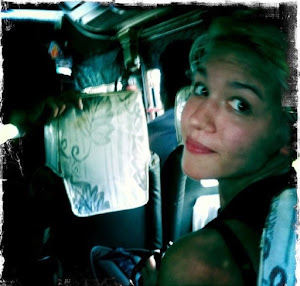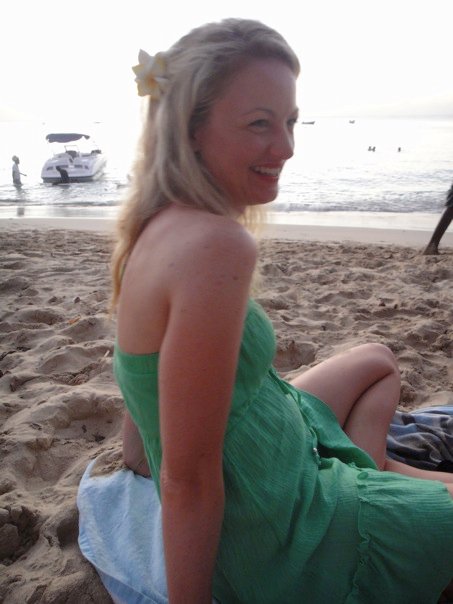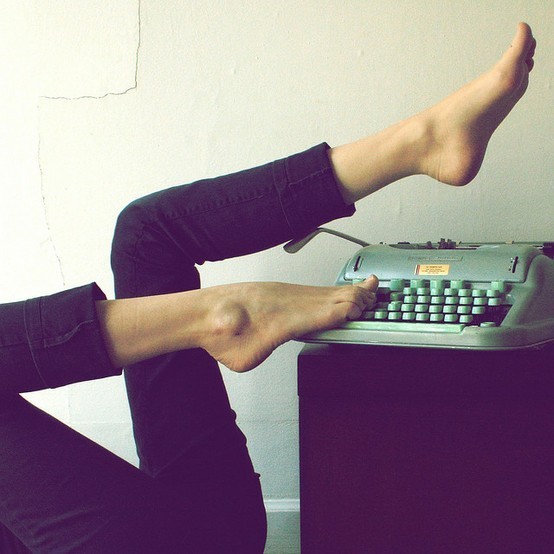Battling the mud and winning: El Mirador 5 day hike, Guatemala
On 30th November, we set off on the most challenging hike of my life: a 5 day, 100km round trip to the largest Mayan city ever – El Mirador, Guatemala.
Our small party consisted of Bronson and I, an American called Stu, a charming Catalan couple and our guide from the local village, Adrian. At 11am, after a 5am bus and breakfast in the end-of-the-road village Carmelita, we set off. Day one – 21km. The first 200 metres was path, the next 20.8km, mud. Sitting now on a Belizean Caribbean island, hearing the turquoise waters lap the sugar white sand, it’s difficult to truly remember the dark, dark first day. The forest closed in; cloud swallowed the sky. We tried to follow Adrian’s footsteps exactly, hopping from least squidgy reed clump to the next…when we could keep up. The pace was despairingly fast, but we had to make camp before utter darkness dissolved the ‘path’. We averaged a pitiful 3km an hour. I’ll spare you the maths, we had 7 hours ahead of us.
It soon became clear that our footwear would not be dry for long. Within the hour mud had seeped into my trainers and soon enough I was trudging ankle deep in swampy, stinky water. Needless to say our footwear would stay saturated for the duration of the hike. We were in Flooded Grassland Forest, a.k.a. bog. Click here for a detailed biological description of this eco-region.
Even though I’m not the biggest fan of getting dirty, it was actually quite fun when the sun was out (second day) and we weren’t being eaten alive by mosquitoes. Number one tip: take 100% Deet repellent. Those evil creatures laugh in the face of anything less. Also wear loose clothes and they can’t get their stingers in quite so easily. I was laughably, Bubonic plagually lumpy after this hike.

Yup, quite wet. That’s Stiff-Upper-Lip Stu just head. Always cheerful no matter what. You need those guys in your group.
Back to day one: racing through the jungle for hours, pulling extra pounds of mud with every heavy, squelching plod, my mind spiralled down a pit of negativity.I couldn’t hear anything Adrian was saying, he was too far ahead and his soft, rural Guatemalan accent was a challenge even face to face (he didn’t speak English).
I was sliding and sloshing, being bitten by mosquitoes and ants, trying to avoid grabbing the spiky trees for support, just battling, battling for hours. At last we stopped for lunch. This was no Lost City Trek (Colombia), processed ham and a slab of plastic cheese slapped together with ketchup and mayo in white bread was the sandwich of the day. And this Mayan town? Call me unimaginative, but I found it hard to transform the hillocks and mounds around us into the fair-sized settlement of Florida.
Dusk fell and just before pitch black we arrived at Tintal, a major Mayan city, another area of tree-covered mounds, and our camp for the night. Exhausted, we bunked down after supper, all five of us in one enormous tent. Before sleep overwhelmed, I lay and listened to the shrill jungle sounds over my head and all around. Ok, I won’t tell a lie, one of the lovely mules had been carrying our Game of Thrones books and I devoured a couple of chapters before shut eye.
I knew this hike was going to be hard; a 100km mud hike in Guatemalan jungle was never going to be a walk in the park, but I wasn’t ready for the mental challenge. “What on Earth am I doing here?” “Why isn’t someone paying me money?” had gone through my head on repeat a thousand times. The change came on day two just before lunch. We got to go inside one of the mounds, a home to families 1,200 years ago. Standing in and understanding the structure made the jungle’s topography come alive. The entrance way was tiny and claustrophobic, but the central hall room was large enough to stand up in, with approximately 1 x 3m floor space.
Bats zoomed a few inches over our heads, disturbed by our head-torch light. I made friends with one, cute hey? (Joking.)
The Mayans didn’t spend much time indoors, their heavy stone, windowless dwellings were for sleeping only. They sacrificed humans to their 22 gods and weren’t afraid to die. They warred, but crafted beautiful carvings. Their style of art is still trendy even in our day.
After 28km and 9 hours we arrived at the world’s largest Mayan city, our goal and our camp for the next two nights – El Mirador. We were greeted by the most fabulous sight! No, not a glorious golden temple shimmering in the evening light, nope, not a 3 course gourmet meal laid out with orchids adorning each silken place setting, but a flock of fat rainbow coloured turkey. What gorgeous iridescent beasts! Strange, beautiful creatures. I was lost, transfixed. Others R&Red with hot tea, I took 20 photographs. I vowed to paint one as I watched their feather formations, peacock blue and deep jade, terracotta fading to olive. Orange nobbles crested their luminous blue heads, wibbling as they peck-pecked the ground.
Before nightfall, Adrian led us through the darkening woods to the famous pyramid temple, El Tigre. This would be our first glimpse of some of El Mirador’s past grandeur. Aptly named (El Tigre means The Tiger in Spanish), this structure breaks out of the forest like a mighty beast. Step over heavy step, we climbed up into the heavens. Past the pencil straight tree trunks, through the canopy and into the sky. At the top we each found our own Mayan brick to perch on and sat in communal silence, gazing over the tree tops, gazing out over the world as the sun sunk to sleep. In the distance we could see the far leafy peaks of other 100m tall pyramids and we understood the vast proportions of this ancient settlement.

A moment of still and peace when we could reflect on what we’d achieved over the past two days and 49km and what the Mayans had achieved over 1000 years ago.
Looking down, the forest disappeared and beneath our feet we saw hundreds of thousands of Mayan people going about their day. Some were building these enormous structures, even before their culture had discovered the wheel, others painting these temples a vivid red to make them glow in the evening sun, they were worshiping their gods, playing their ball game that famously ends in death for the winner, living their extreme, ancient lives.
The next day was a rest day and Adrian showed us around the city. It’s still mostly jungle. Archeologists come only in the (definitely) dry season – July and August – so progress is slow. Fabulous buildings and carvings punctuate the forest rather than forest spotting an urban environment. If you’d prefer to see a restored city, go to Tikal, not El Mirador. Adrian was the perfect guide to show us these wonders as he’s been helping the experts uncover them for the past 15 years. He even discovered one! We explored temples and homes, beautifully carved aqueducts depicting mythic Mayan stories of creation and platforms built to understand the stars. It was extremely interesting and blessedly dry underfoot!
While I wasn’t deeply impressed by the flora of the forest, the animal life made up for it. That night we were serenaded by howler monkeys that sounded like deep-throated dinosaurs calling out in the darkness. Poor Stu didn’t know what the long eerie howls were and lay frozen in his tent until sleep came to comfort him again. The next morning spider monkeys swung above us, as easily as soaring birds in the air. On the last day Adrian pointed out fresh jaguar and tapir prints, close to camp.
Despite the mental and physical difficulty and the mud, I feel proud of this crazy adventure. I have a sense of achievement. I’m proud I overcame my grumps. Man though, it was hard.
Contrarily one of the things I liked was the authenticity of the experience. It could have been 100 years ago, nothing would have been different. Adrian spoke only Spanish and was from the local village, as was our sweet 17 year old chef Claudia and our mule assistant, Jose. Two mules carried our personal things and general supplies – food, plates, cooking pots etc. and two carried Claudia and Jose. We ate tortillas, black beans, eggs and fruit – local food. It was hard – luxuries came in the form of tea and hot meals. I think about the first explorers battling through dense forests to bring back discoveries of flora and fauna, news of ancient and current civilizations, new wonders of the world. They didn’t go for just five days. They left their loved ones for weeks or months, some for years. It was inspiring to think of them while hiking through Guatemala on a our way to El Mirador, a hugely important ruined Mayan city buried deep in the jungle.









 Vogue? Nah – Chicquero
Vogue? Nah – Chicquero Key of YES!
Key of YES! Neon Flashing Hearts
Neon Flashing Hearts ZDP (cool design stuff)
ZDP (cool design stuff) A Barbados Journey
A Barbados Journey Ms Elena Levon on Traveling
Ms Elena Levon on Traveling Bailey is on the right track
Bailey is on the right track Admiration and Inspiration
Admiration and Inspiration
Just superbly written. I wish my own blog on this experience could have captured it the way you did. I have realised that there were so many things that I had already forgotten, prior to reading this. Thanks so much for taking the time to really capture the experience – now I can always remember it the way it really was.
Amazing. I love your honesty about the way you feel- I’m 99.9% certain that I will be the same, if not worse… I would probably have to contemplate whether I’m hardcore enough, but you give me faith that it can be done. It all seems impossible until it’s done 🙂
If you get a minute sometime could you mandarme a list of trekking/jungle essentials por favor.
Gracias, te quiero!x
Hey Miss Buff,
Thanks for your kind words (again). I’ve just done a few treks:
The Lost City Trek, Colombia (La Cuidad Perdida) – 3 nights. See blog post.
Inca Trail, Peru
Colca Canyon, Peru. See blog posts. 3 nights.
El Mirador, Guatemala. 4 nights.
I’d highly recommend all of them, though El Mirador a.k.a. The Mud Trek was definitely the most challenging.
Huarez in Peru is also supposed to be a must. We’re sad we had to skip it.
Un abrazo enorme carino!